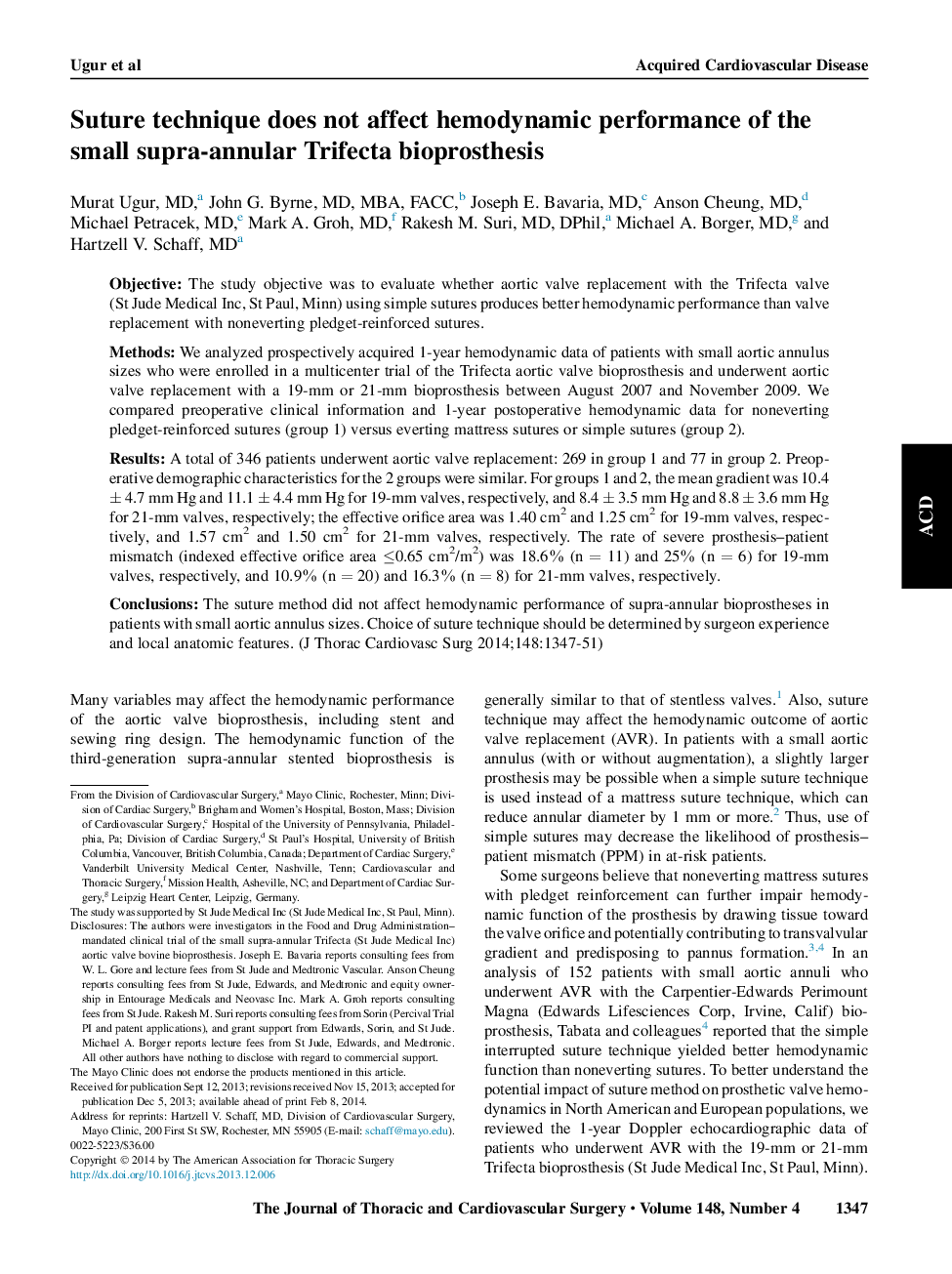| Article ID | Journal | Published Year | Pages | File Type |
|---|---|---|---|---|
| 2980388 | The Journal of Thoracic and Cardiovascular Surgery | 2014 | 5 Pages |
ObjectiveThe study objective was to evaluate whether aortic valve replacement with the Trifecta valve (St Jude Medical Inc, St Paul, Minn) using simple sutures produces better hemodynamic performance than valve replacement with noneverting pledget-reinforced sutures.MethodsWe analyzed prospectively acquired 1-year hemodynamic data of patients with small aortic annulus sizes who were enrolled in a multicenter trial of the Trifecta aortic valve bioprosthesis and underwent aortic valve replacement with a 19-mm or 21-mm bioprosthesis between August 2007 and November 2009. We compared preoperative clinical information and 1-year postoperative hemodynamic data for noneverting pledget-reinforced sutures (group 1) versus everting mattress sutures or simple sutures (group 2).ResultsA total of 346 patients underwent aortic valve replacement: 269 in group 1 and 77 in group 2. Preoperative demographic characteristics for the 2 groups were similar. For groups 1 and 2, the mean gradient was 10.4 ± 4.7 mm Hg and 11.1 ± 4.4 mm Hg for 19-mm valves, respectively, and 8.4 ± 3.5 mm Hg and 8.8 ± 3.6 mm Hg for 21-mm valves, respectively; the effective orifice area was 1.40 cm2 and 1.25 cm2 for 19-mm valves, respectively, and 1.57 cm2 and 1.50 cm2 for 21-mm valves, respectively. The rate of severe prosthesis–patient mismatch (indexed effective orifice area ≤0.65 cm2/m2) was 18.6% (n = 11) and 25% (n = 6) for 19-mm valves, respectively, and 10.9% (n = 20) and 16.3% (n = 8) for 21-mm valves, respectively.ConclusionsThe suture method did not affect hemodynamic performance of supra-annular bioprostheses in patients with small aortic annulus sizes. Choice of suture technique should be determined by surgeon experience and local anatomic features.
